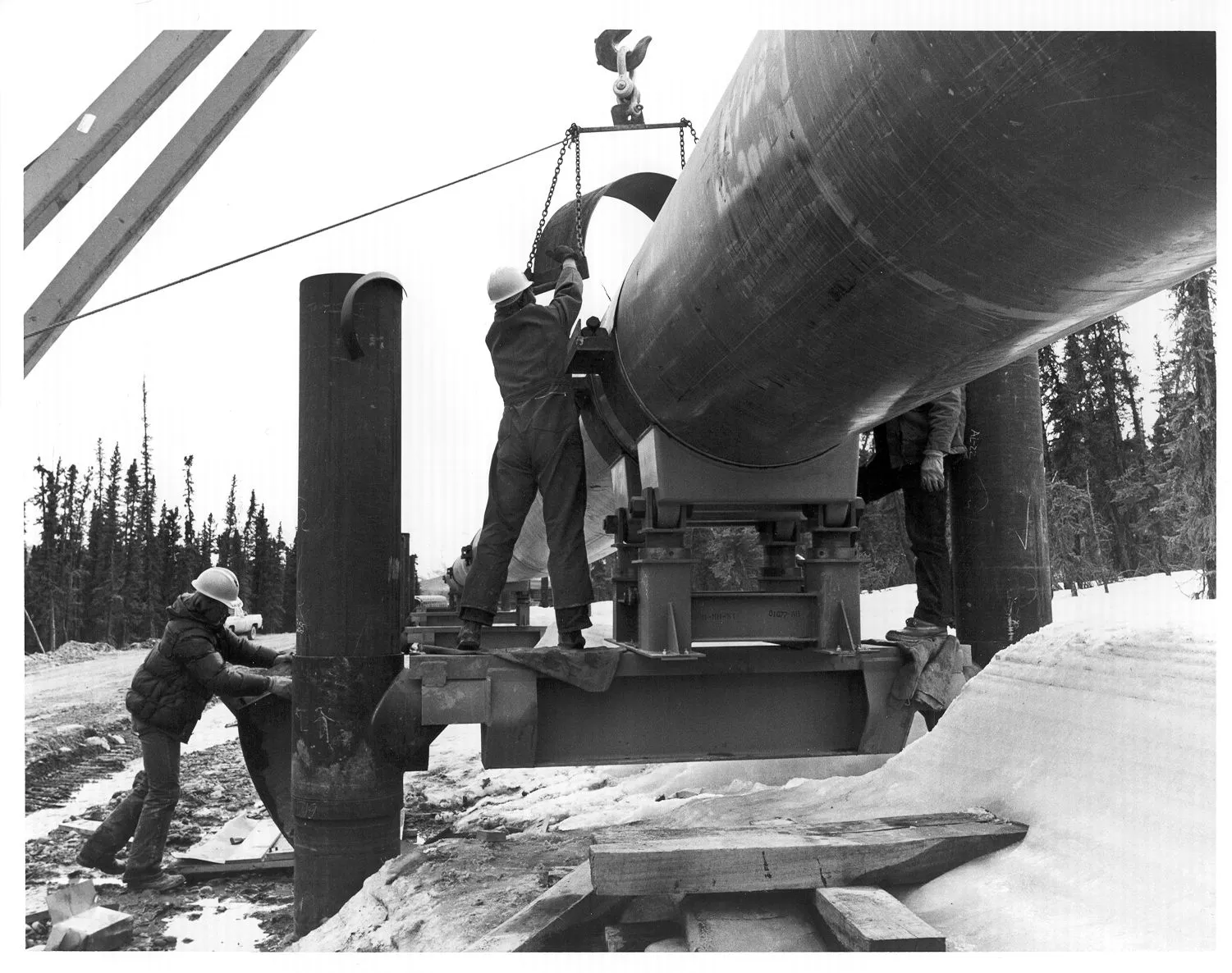On March 27th, 1975, the Trans-Alaska Pipeline System (TAPS) witnessed a monumental event in the annals of industrial history as construction began on the vast network of pipes that would traverse the rugged terrain of Alaska. This marked the genesis of an engineering marvel that would not only transform the landscape but also reshape the economic and geopolitical dynamics of the region. The construction of the Trans-Alaska Pipeline was a feat of human ingenuity, perseverance, and collaboration, leaving an indelible mark on the landscape of Alaska and the collective consciousness of the nation.
The idea of constructing a pipeline to transport oil from the North Slope of Alaska to the ice-free port of Valdez had been contemplated for decades before it finally materialized in the 1970s. With the discovery of massive oil reserves in Prudhoe Bay, the need for an efficient means of transporting crude oil became imperative. The Trans-Alaska Pipeline emerged as the solution to this logistical challenge, promising to unlock the vast potential of Alaska’s oil reserves and bolster the nation’s energy security.
The construction of the pipeline posed formidable challenges, not least of which was the harsh and unforgiving terrain through which it would pass. Spanning over 800 miles, the pipeline would traverse some of the most remote and environmentally sensitive regions of Alaska, including pristine wilderness areas, permafrost zones, and seismic fault lines. Engineers and construction workers faced extreme weather conditions, rugged terrain, and logistical obstacles that tested the limits of human endurance and technological innovation.
The construction of the Trans-Alaska Pipeline was a herculean undertaking that required the collective efforts of thousands of workers, engineers, and contractors from across the country. The project employed cutting-edge technology and innovative construction techniques to overcome the myriad challenges posed by the Alaskan wilderness. Helicopters, bulldozers, and specialized equipment were deployed to clear vegetation, excavate trenches, and lay thousands of miles of steel pipe with remarkable precision and efficiency.
One of the most remarkable aspects of the Trans-Alaska Pipeline project was its commitment to environmental stewardship and safety. Recognizing the ecological sensitivity of the region, stringent environmental regulations were put in place to mitigate the impact of construction activities on the fragile Arctic ecosystem. Innovative measures such as elevated supports, insulated sections, and heat exchangers were implemented to protect the permafrost and minimize the risk of oil spills or environmental contamination.
Beyond its engineering and environmental significance, the construction of the Trans-Alaska Pipeline had far-reaching economic and geopolitical implications. The pipeline provided a vital lifeline for the burgeoning oil industry in Alaska, facilitating the rapid extraction and transportation of crude oil from the North Slope to global markets. It spurred economic development, created thousands of jobs, and generated billions of dollars in revenue for the state and federal governments.
Moreover, the completion of the Trans-Alaska Pipeline marked a watershed moment in the quest for energy independence and security in the United States. By tapping into domestic oil reserves, the pipeline reduced the nation’s dependence on foreign oil imports and strengthened its strategic position on the world stage. It served as a symbol of American innovation, resilience, and self-reliance, showcasing the transformative power of human endeavor in overcoming seemingly insurmountable challenges.
In conclusion, the commencement of construction on the Trans-Alaska Pipeline on March 27th, 1975, stands as a testament to the spirit of exploration, enterprise, and ambition that defines the American experience. It represents a triumph of human ingenuity over nature’s formidable obstacles and a landmark achievement in the annals of engineering and industry. As we reflect on this historic milestone, we are reminded of the enduring legacy of vision, determination, and collaboration that continues to shape the destiny of nations and inspire future generations.












What do you think?
It is nice to know your opinion. Leave a comment.